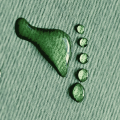

Cope Allman Jaycare has developed a process that allows a lay down of up to a 0.5mm thickness of UV cured ink directly onto the surface of a plastic container. In-house screen printing facilities were adapted to maintain an even and consistent print height.
Although originally developed for printing Braille onto containers, the process also can be used in traditional screen printing, allowing clients the opportunity to highlight particular parts of their artwork (i.e. logos, etc.) by raising the print from the surface of the container.
Samples of the Braille printing have been analysed by the RNIB (Royal National Institute of Blind People) and meet the current EU directive for Braille on pharmaceutical packaging. The RNIB also commented on the fact that the Braille print offered superior definition when compared to some instances of Braille that has been embossed through pack or label.
According to EU directives from 2004, almost all pharmaceutical packaging must have been produced with Braille. In November 2010, a new European directive, DIN EN 15823, came into force setting up minimum heights for Braille as 0.12 mm. During trial sampling, Cope Allman Jaycare’s Braille print consistently reproduce a dot height of over 0.25mm.



























.jpg)



.jpg)